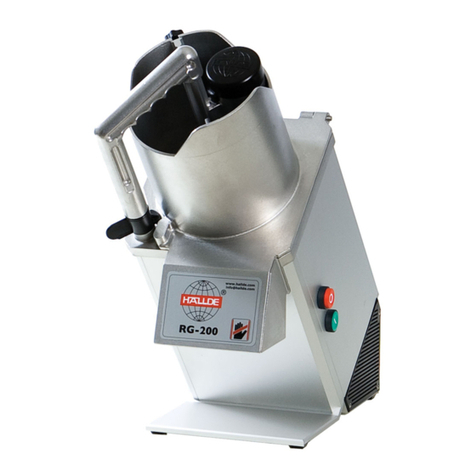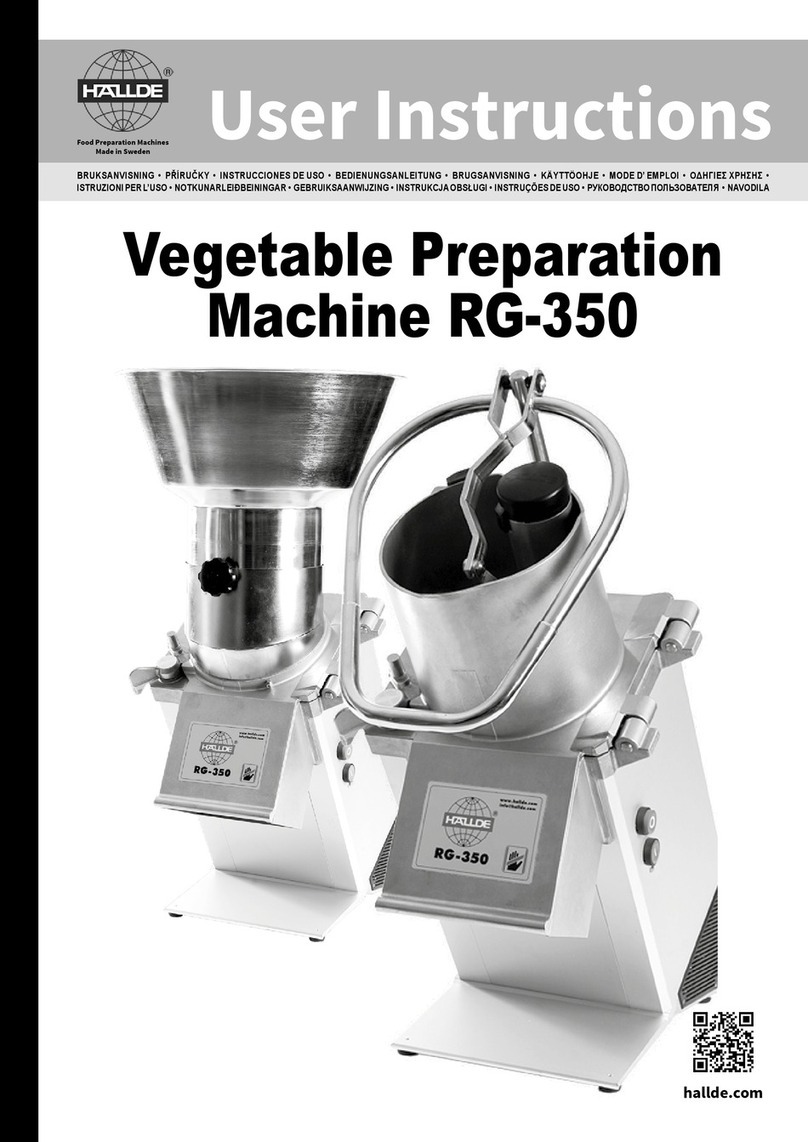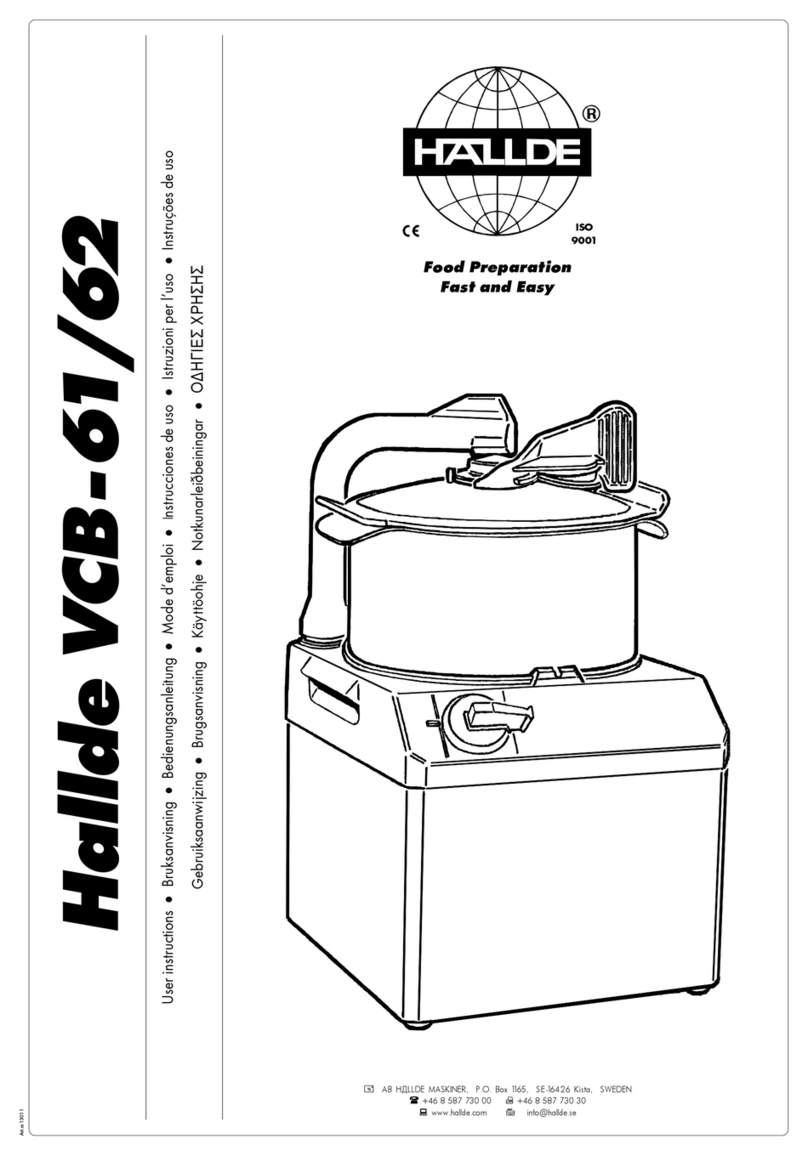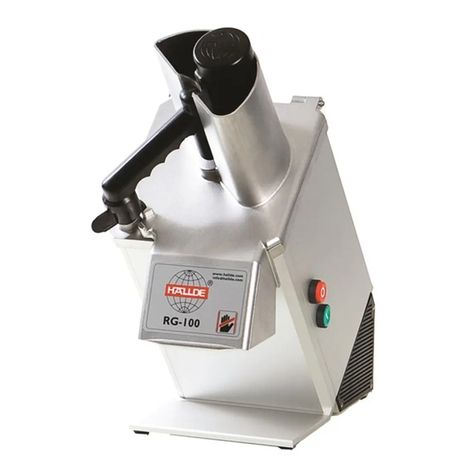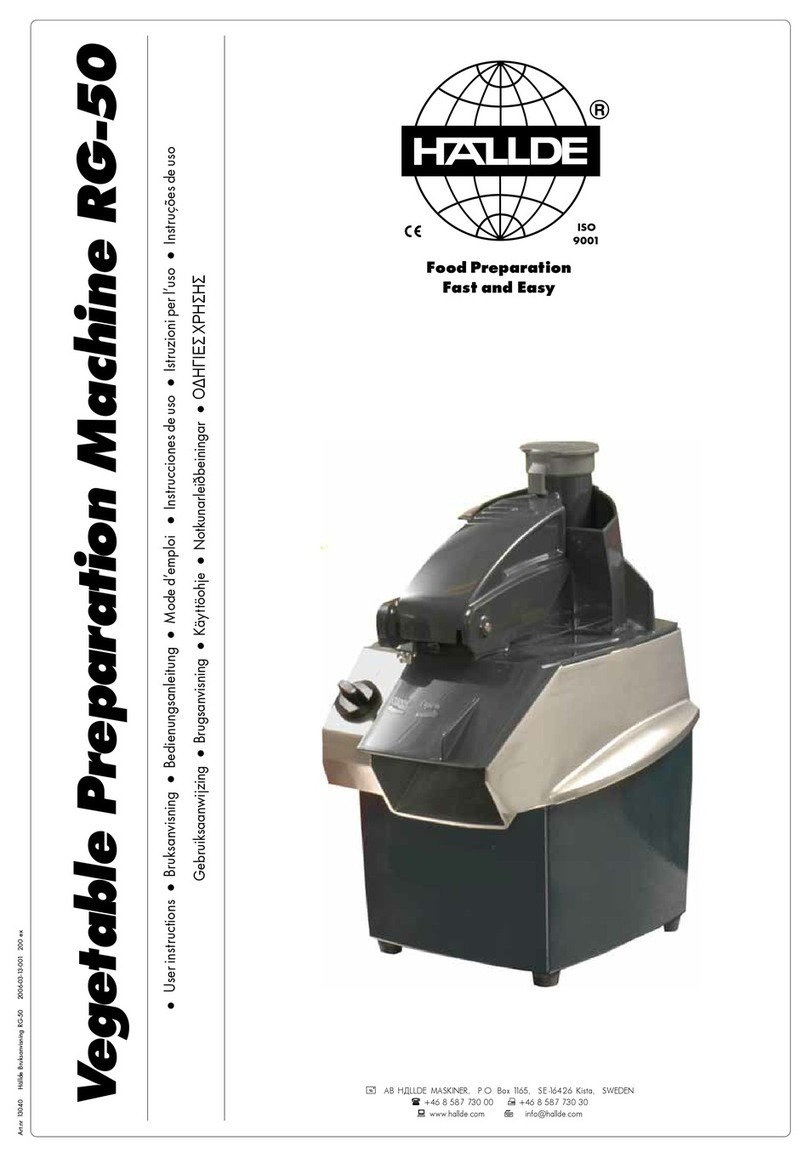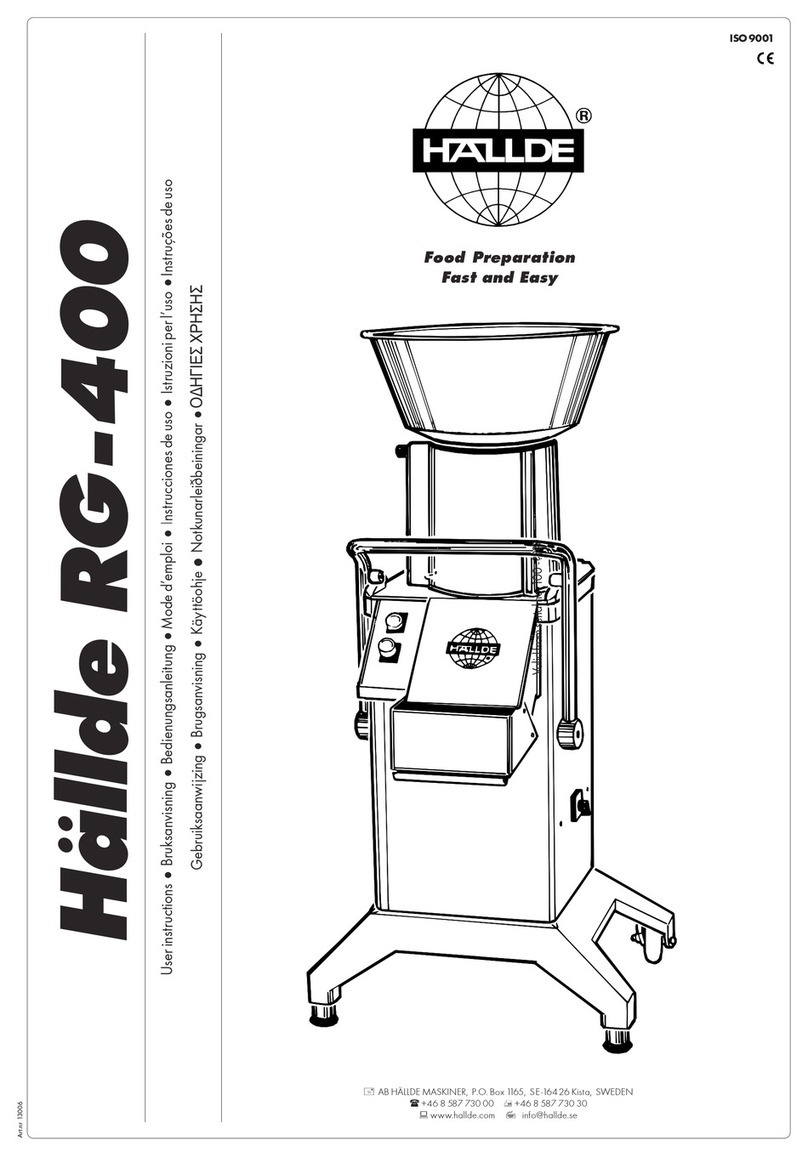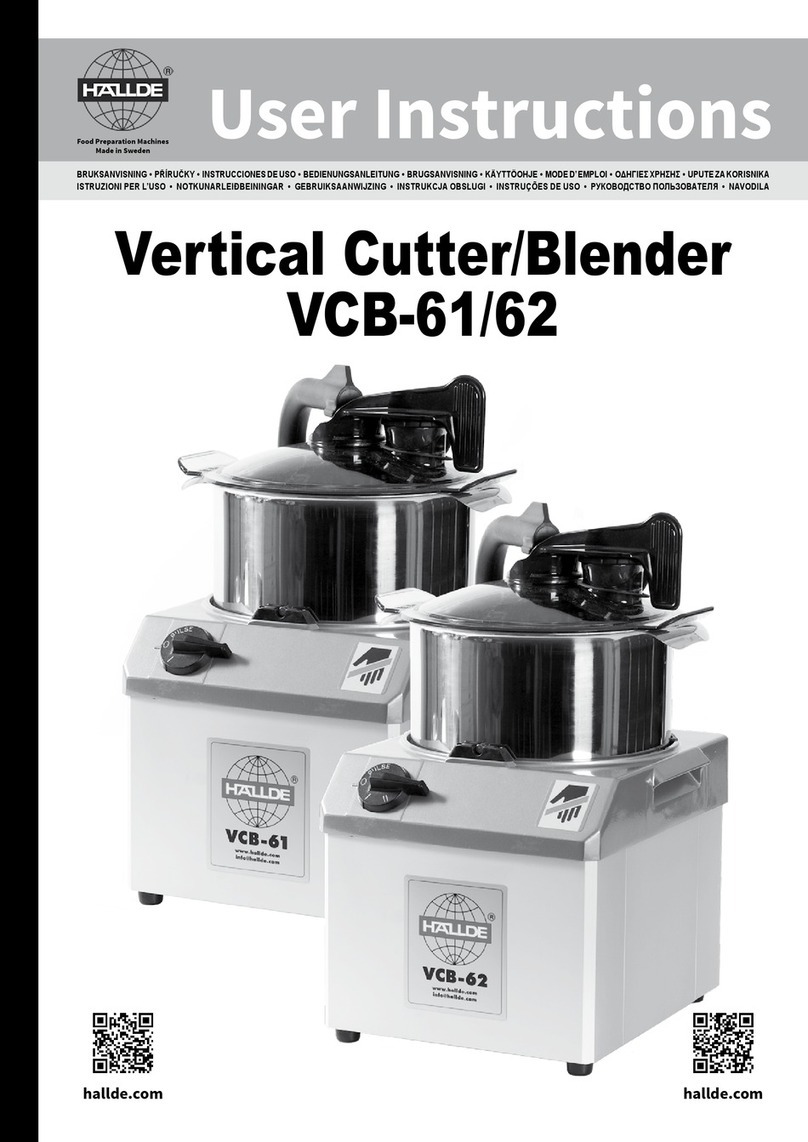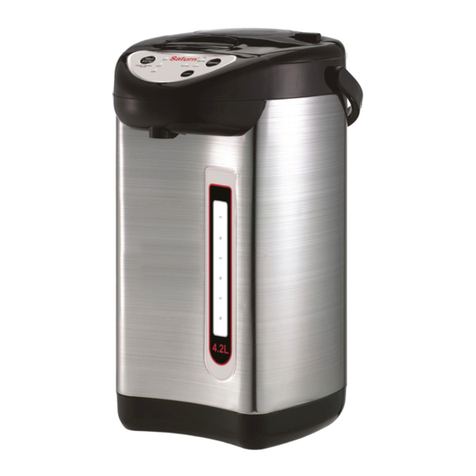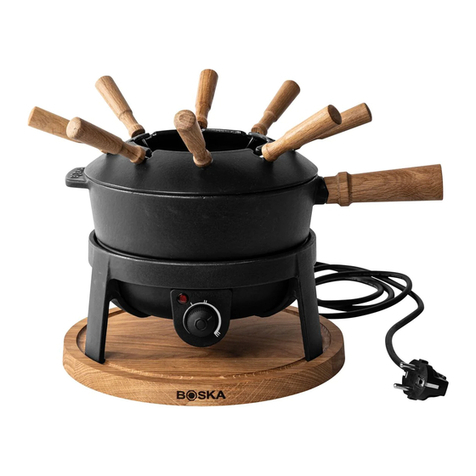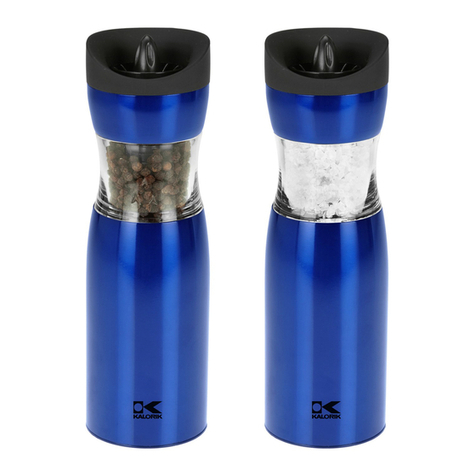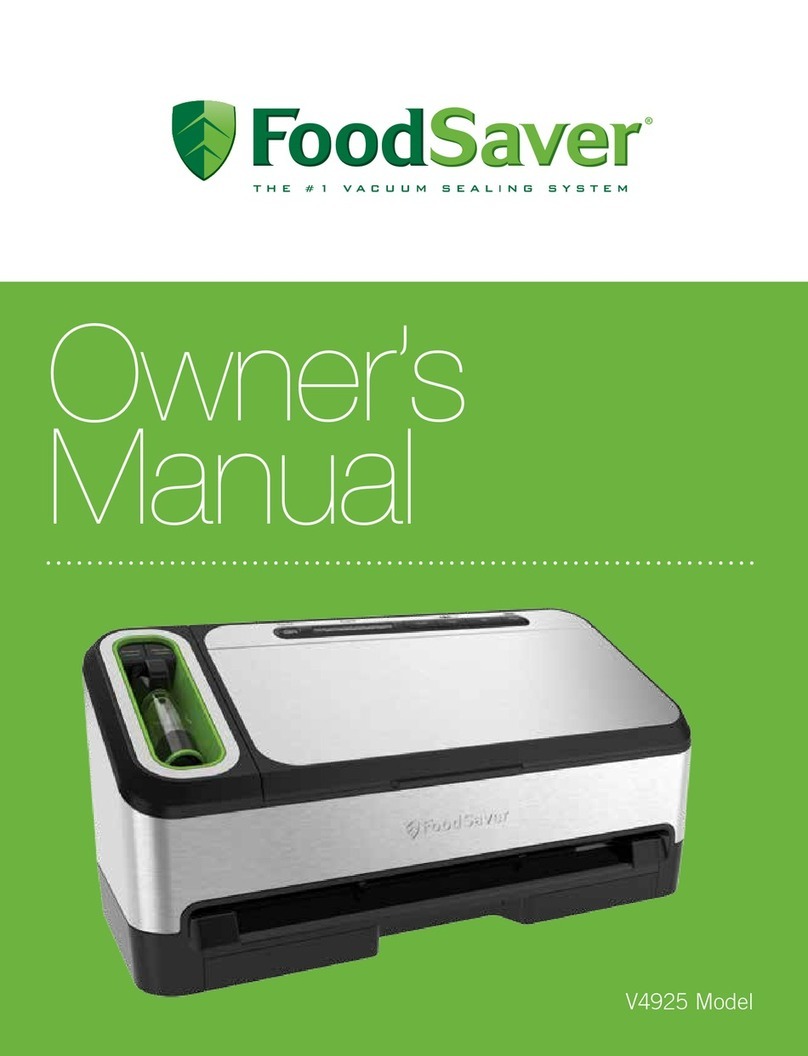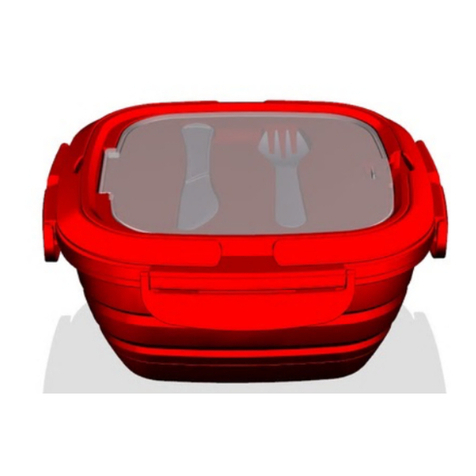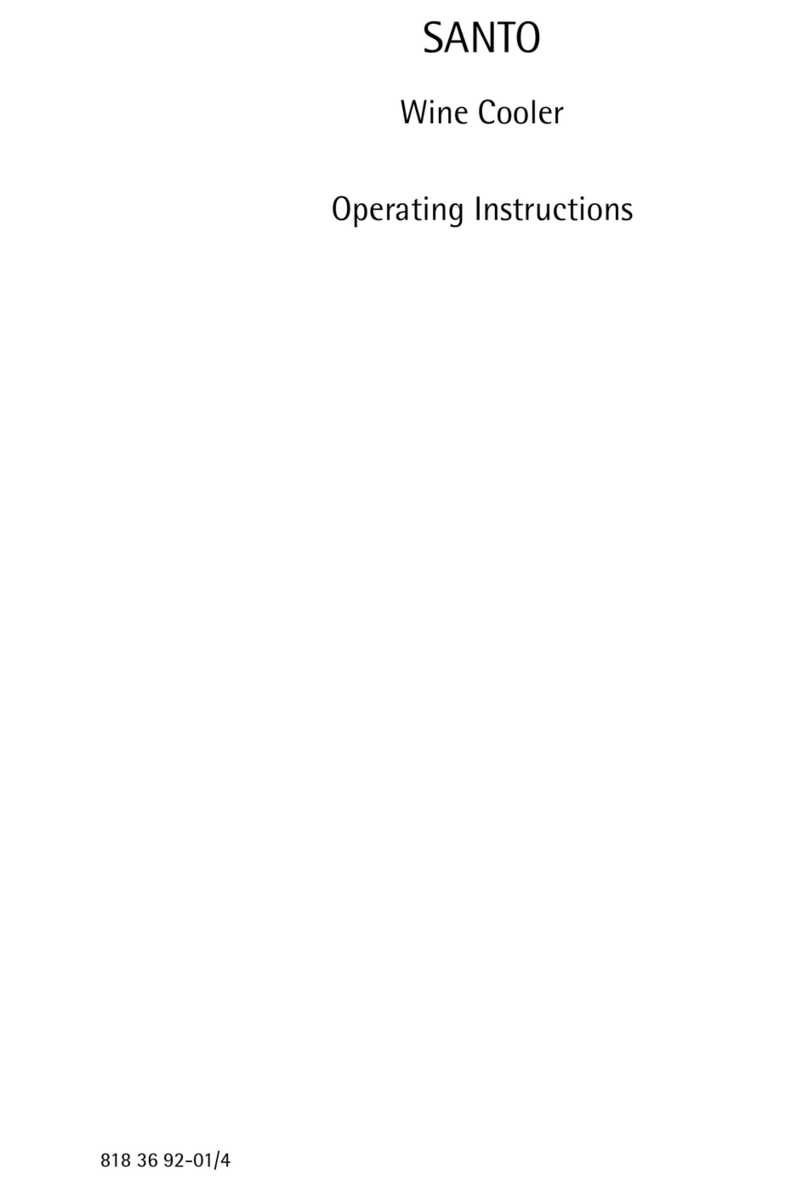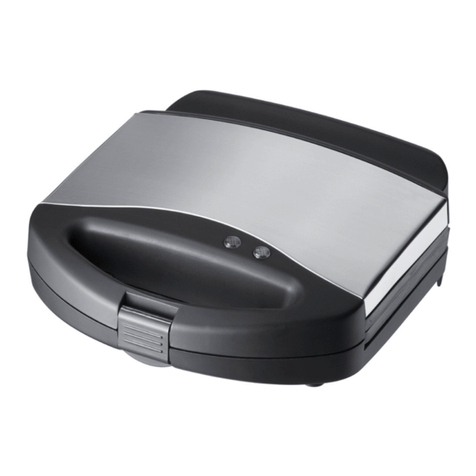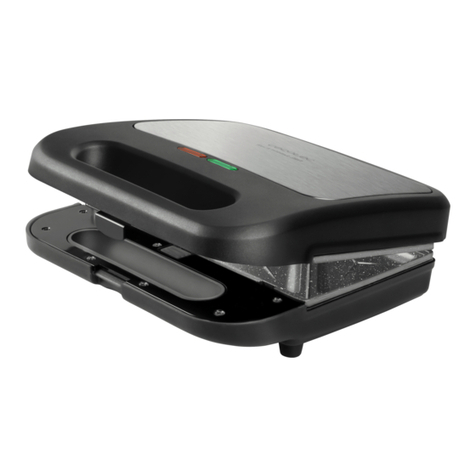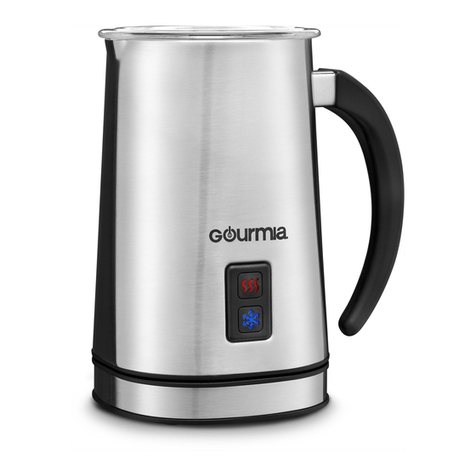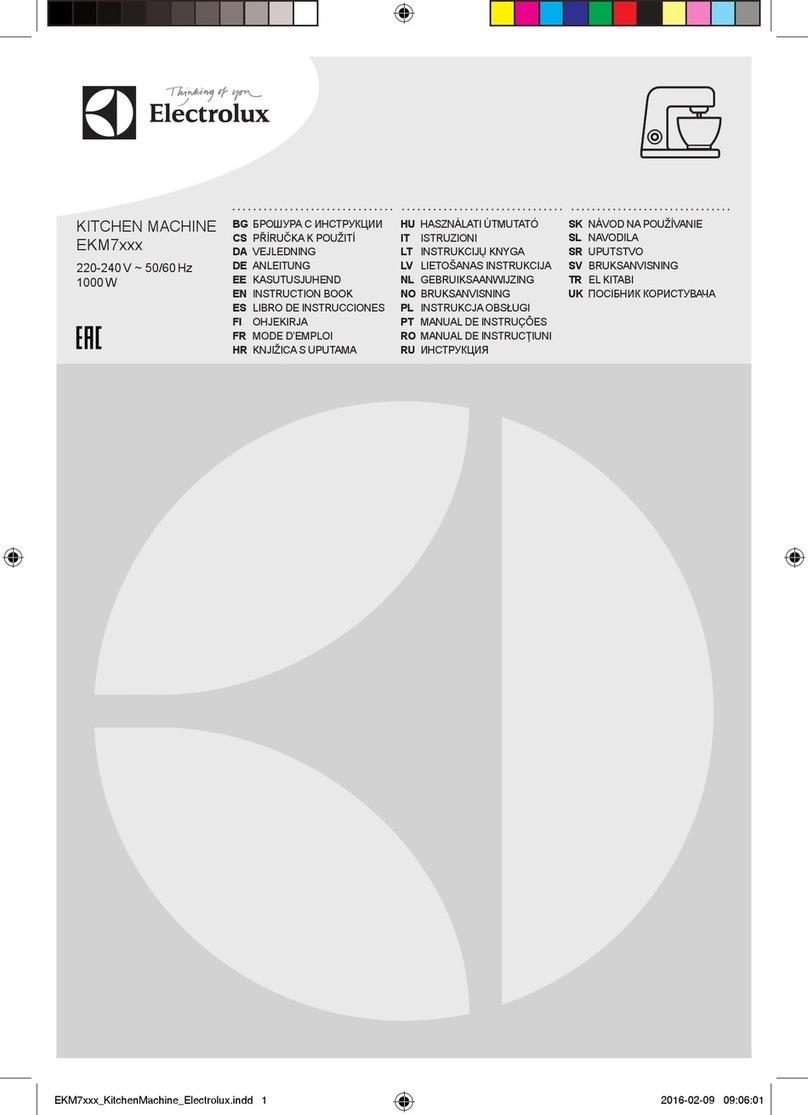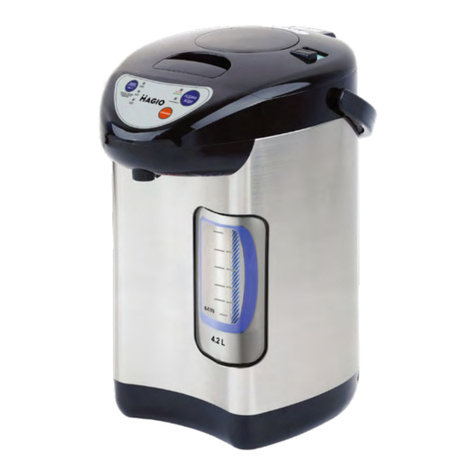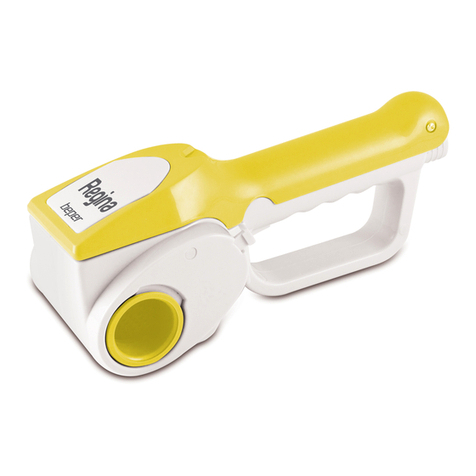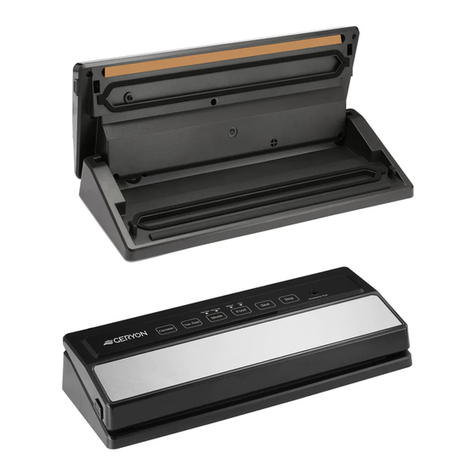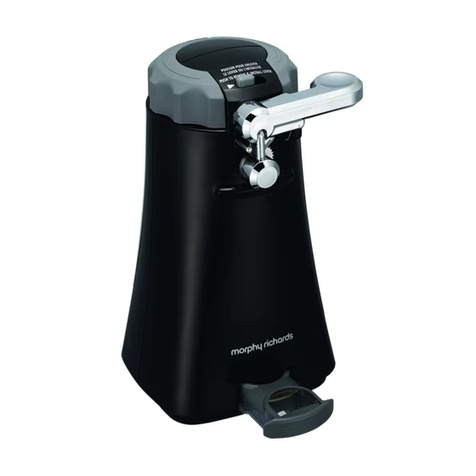
only the selected cutting tool to the shaft
and turn the cutting tool so that it drops into
its coupling.
If using the pusher plate (1:A) fit the drilling
sleeve (1:J) by turning it anti-clockwise onto
the centre shaft of the cutting tool,
alternatively, if using the feed hopper (1:N) fit
the stirring sleeve (1:M) by turning it anti-
clockwise onto the centre shaft of the cutting
tool.
Lower the feed cylinder (1:C) alternatively
1:O) and turn the locking knob (1:B)
clockwise to the locked position.
REMOVING THE CUTTING TOOLS
Raise the pusher plate (1:A) and swing it out
to the left, or remove the feed hopper (1:N).
Turn the locking knob (1:B) anti-clockwise
and raise the feed cylinder (1:C) alternatively
(1:O).
Remove the drilling sleeve (1:J) alternatively
the stirring sleeve (1:M) by turning it
clockwise by means of the spanner (1:K).
Remove the cutting tool/tools and the
ejector plate (1:D).
USING THE FEEDERS
Feed cylinder with push feeder:
The large feed compartment is used mainly
for bulk feeding of most kinds of products
(2:C) and for cutting larger products such as
cabbage.
The large feed compartment is also used
when the material is to be cut in a definite
direction, such as tomatoes and lemons.
Place/stack the products as shown in the
figure (3:D).
The feed tube is used for cutting long
products such as cucumbers (3:E).
Feed cylinder with feed hopper:
The feed hopper (3:C) is used for continuous
feeding/cutting of large quantities of
potatoes, onions, dry bread, nuts,
mushrooms, etc.
CLEANING
Switch off the machine and remove the
power supply plug from the socket.
Carefully clean the machine immediately
after use.
If the cutting tools are marked "diwash",
read and follow the special "diwash" user
instruction manual carefully.
Never wash light metal items in the
dishwasher unless they are marked “diwash”.
If you have used a dicing grid (2:G), leave it
in the machine, and use the brush (3:B) for
pushing out any dices remaining in the grid.
Remove the loose parts of the machine, wash
them and dry them thoroughly.
Wipe the machine with a damp cloth.
Always wipe the knives of the cutting tools
dry after use.
Always store the cutting tools (2) on the
hangers (3:A) on the wall.
Never use sharp objects or a high-pressure
spray gun for cleaning.
Never spray water on the sides of the
machine.
CHECK EVERY WEEK
That the machine stops as soon as the pusher
plate (1:A) has been moved up and swung
out, and that it restarts when the pusher
plate has been swung in and lowered.
That the machine cannot be started with the
feed cylinder (1:C) removed and with the
pusher plate lowered.
That the machine cannot be started with the
feed cylinder (1:O) fitted but the feed
hopper (1:N) removed.
Remove the plug from the power supply
socket and then check that the electric cable
is in good condition and is not cracked on
the outside.
If any of the safety functions does not
perform as intended or if the electric cable is
cracked, get a specialist to attend to the
machine before connecting it back to the
power supply.
Check that the pusher plate shaft (1:I) has
been lubricated as necessary and runs freely.
If the shaft does not run freely, clean it
carefully and lubricate it with a few drops of
machine oil.
Check that the knives and shredder plates
are in good condition and are sharp.
TROUBLE-SHOOTING
FAULT: The machine cannot be started, or
stops while it is running and cannot be
restarted.
REMEDY: Check that the plug is securely
fitted into the power supply socket, or that
the isolating switch is closed. Check that the
feed cylinder (1:C) alternatively (1:O),
pusher plate (1:A) or the feed hopper (1:N)
is locked in the correct position. Move down
the pusher plate into the feed cylinder.
Check that the fuses in the fuse box for the
premises have not blown and that they have
the correct rating. Wait for a few minutes
and try to restart the machine. If the machine
still fails to run, call a specialist.
FAULT: Low capacity or poor cutting results.
REMEDY: Make sure that you are using the
correct cutting tool or combination of
cuttings tools (2). Fit the drilling sleeve (1:J)
alternatively the stirring sleeve (1:M). Check
that the knives and shredder plates are in
good condition and are sharp. Press the
food down loosely.
FAULT: The cutting tool (2) cannot be
removed.
REMEDY: Always use the ejector plate (1:D).
Use a thick leather glove or the like that the
knives of the cutting tool cannot cut through,
and turn the cutting tool clockwise to release
it.
FAULT: The drilling sleeve (1:J) alternatively
the stirring sleeve (1:M) cannot be removed.
REMEDY: Use the spanner (1:K) to unscrew
the drilling sleeve (1:J) alternatively the stirring
sleeve (1:M) clockwise.
TECHNICAL SPECIFICATION
MACHINE: Motor: 0.75 kW, 230 V, single-
phase, 50 Hz, or 400 V, 3-phase, 50 Hz,
with thermal motor protection. Transmission:
gears. Safety system: Four safety switches.
Degree of protection: IP44. Power supply
socket: Earthed, single-phase, 10 A, or 3-
phase, 16 A. Fuse in fuse box for the
premises: 10 A, slow-blow. Sound level LpA
(EN31201): 73 dBA.
TOOLS: Diameter: 215 mm. Speed: 360
rpm.
MATERIALS: Machine housing and feed
cylinder: Anodized or polished aluminium
alloy and/or stainless steel. Cutting tool
discs: Aluminium alloy. Cutting tool knives:
Knife steel of the highest quality.
NET WEIGHTS: Machine base: 26 kg. Feed
cylinder with push feeder: 6 kg. Feed
cylinder with feed hopper: 7,5 kg. Cutting
tools: About 1 kg on average.
STANDARDS: NSF STANDARD 8 for
machine, EU Machine Directive 89/
392EEC.
